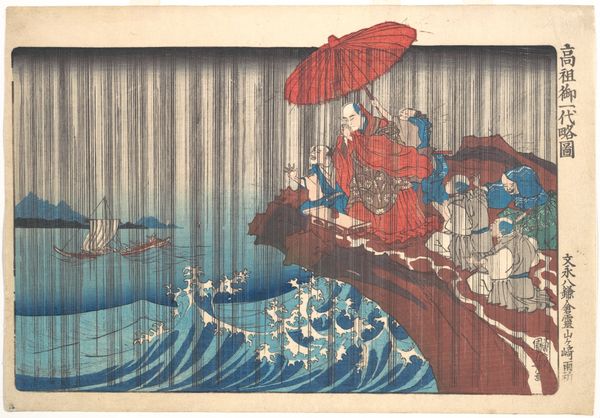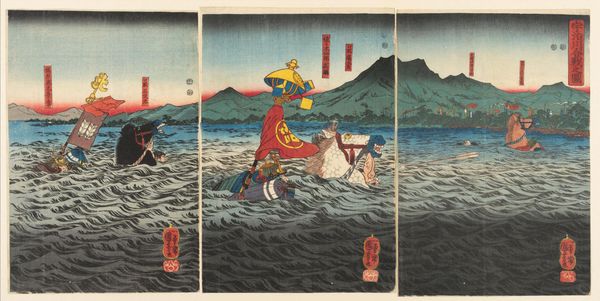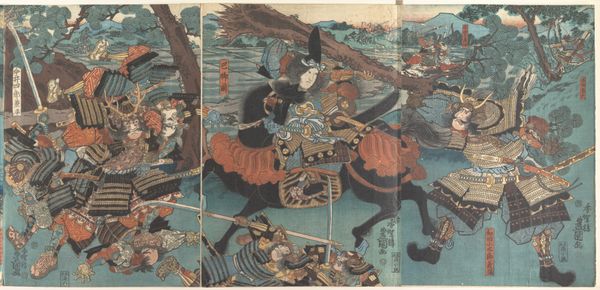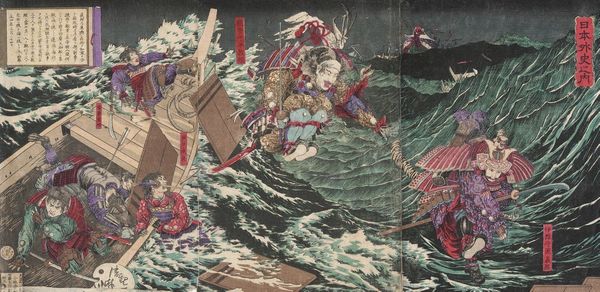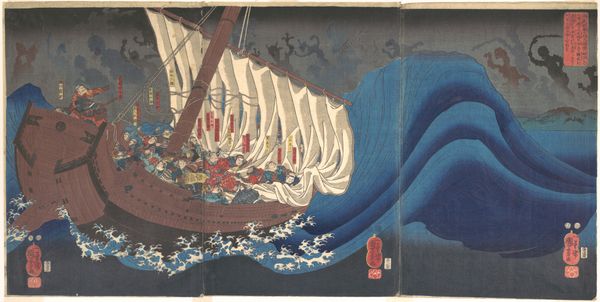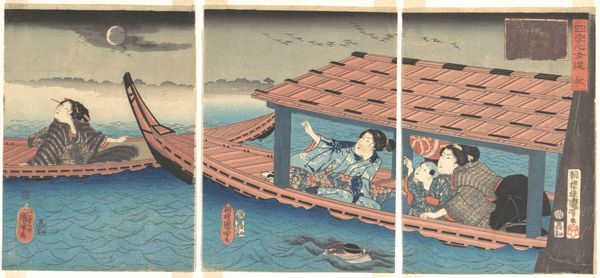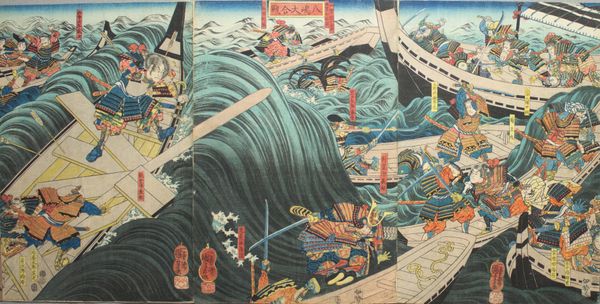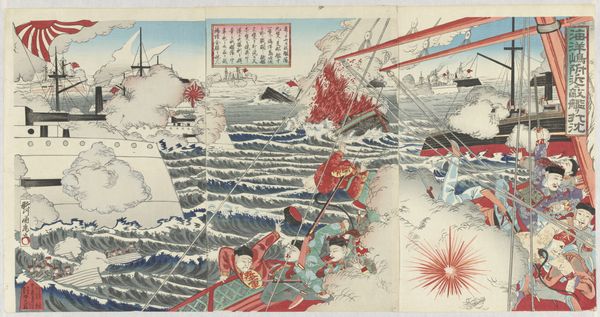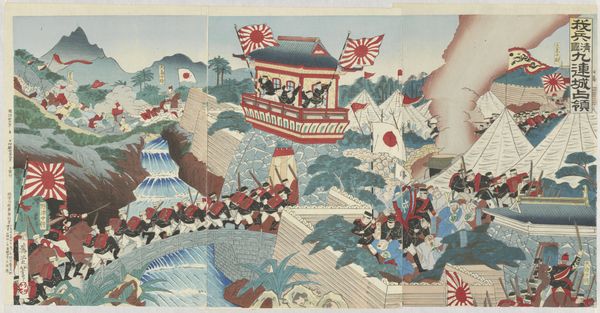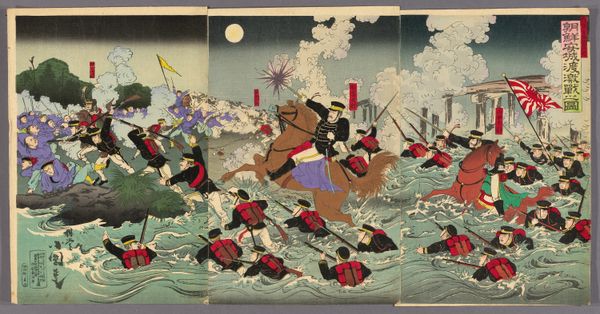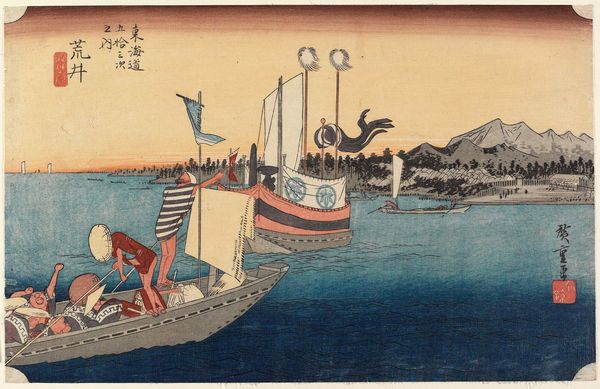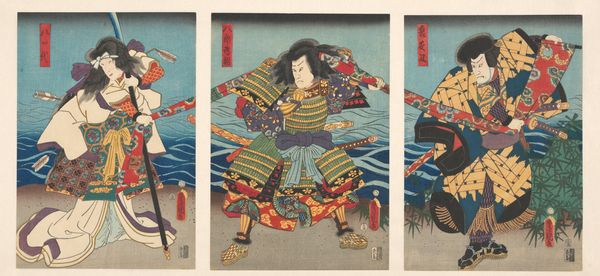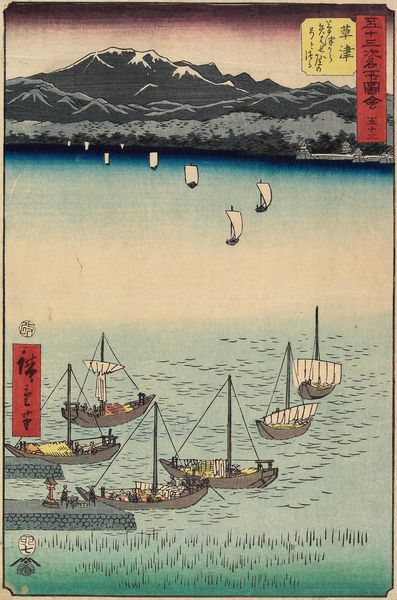
print, woodblock-print
#
water colours
#
narrative-art
# print
#
human-figures
#
asian-art
#
landscape
#
ukiyo-e
#
japan
#
figuration
#
woodblock-print
#
history-painting
Dimensions: Image (a): 13 7/8 x 9 1/2 in. (35.2 x 24.1 cm) Image (b): 13 7/8 x 9 1/4 in. (35.2 x 23.5 cm) Image (c): 13 3/4 x 9 1/2 in. (34.9 x 24.1 cm)
Copyright: Public Domain
Editor: This woodblock print triptych, "Warrior Scene" by Utagawa Sadahide, dating from 1807 to 1879, presents a rather chaotic scene. The crashing waves and torrential rain immediately give me a sense of struggle, almost like a cosmic battle. What symbols stand out to you in this work? Curator: The crashing waves certainly dominate, don't they? They speak to a powerful, almost unstoppable force. The artist, Sadahide, invites us to consider how water, a fundamental life-giving element, can also embody destruction. But beyond that, consider the human figures: How do they contribute to the scene's symbolic weight? What does their positioning suggest to you about their roles or intentions? Editor: Well, the figures at the bottom seem to be observers, standing behind what looks like a wall, while the boats and combatants in the waves seem overwhelmed by the storm and maybe even attacked by a giant squid! There also seem to be ethereal figures in the clouds throwing beams. Curator: Precisely! Think about the cultural context here. In Japanese folklore, storms are often linked to divine wrath or, conversely, purification. The ethereal figures you mentioned could be deities or supernatural beings controlling the elements, weaving in elements of cultural memory, indicating moral judgments or consequences unfolding within the scene. It is less about literal depiction and more about the symbolic narrative of power, resilience, and the precariousness of human existence. How might a contemporary audience interpret such imagery? Editor: It definitely makes you think about the power of nature and humanity's place within it. I hadn't considered the potential religious context before, viewing the painting more literally, but that adds so much depth. Curator: Exactly, and that's the beauty of art! We approach an image with our own cultural baggage, while it comes to us with its own memories. Understanding those dialogues enriches the experience.
Comments
No comments
Be the first to comment and join the conversation on the ultimate creative platform.
